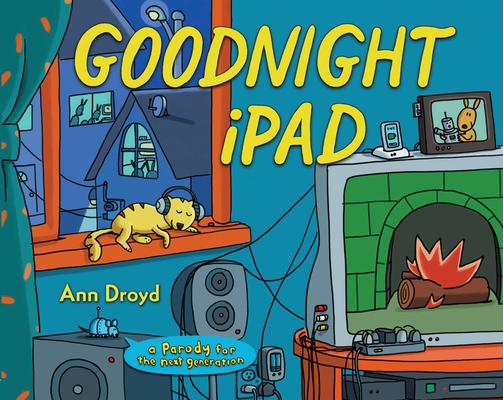This post will be a bit of a departure from my usual fare. Typically I like to keep things light and conversational but some topics deserve a more in depth look. This is adapted from a (theoretical) research proposal I wrote for my Master's degree, but much of the research literature I used is relevant to everyday teachers so I wanted to share it.
If you find this topic interesting, I would highly recommend your read
The Book Whisperer by Donalyn Miller. Also I have included a list of references at the end of this post for your perusal.
The Importance of Literacy
In the world of education, student literacy is perhaps the subject most lauded as crucial to success in school and beyond. Indeed, a literate society is a society that is able to thrive, improve, and expand. It was not until the invention of the written word that humans began to show exponential progress, and the importance of reading continues today. In the majority of high schools, demonstrating reading proficiency is a graduation requirement. Reading skills make up half of a student’s score on the SAT, and reading ability is often the greatest indicator of student success in post-secondary education.
Despite the importance of literacy skills, many students avoid reading whenever possible. Many of them never complete required textbook or novel readings, and the percentage of students who read for enjoyment is on the decline. Numerous researchers have posited that students need to spend additional time reading to build the literacy skills necessary for life, but this previously held belief has been shaken in recent years.
When the National Reading Panel released its report in 2000 following review of various research on reading practices, they concluded that there was insufficient evidence to support use of Sustained Silent Reading as more effective than other instructional methods. Many teachers and policy makers took this to mean that it was time to remove independent reading from classrooms across the county and around the world.
However, the National Reading Panel was simply stating that more research needs to be done in this area
. In particular, the vast majority of reading research is conducted with elementary aged students, so additional studies are needed at the high school level. Studies have shown that the older a student is, the less likely they are to spend time engaged and enjoying reading. Given that, it is imperative that we examine the effect of independent reading on this group, and how it affects their literacy skills.
So let me repeat: the National Reading Panel doesn't say that silent reading doesn't work. They were saying that it needs to be researched further before it can be considered an evidence based best practice.
The Current State of Reading
According to a 2007 report from the National Endowment for the Arts, high school students “read less often for shorter amounts of time when compared with other age groups and with Americans of the past” (p. 7). “Less than one-third of 13-year-olds are daily readers. The percentage of 17-year-olds who read nothing at all for pleasure has doubled over a 20-year period” (Biancarosa & Snow, 2006).
This trend has been noted for decades, even in adults, and is likely to continue. According to a Gallup poll, in 1978 8% of American adults reported reading no books in the previous 12 months. That number has steadily increased. As of a 2011 Pew Research poll, 19% of adults report not reading any books in the previous 12 months, more than double the initial Gallup poll (Rainie, et al., 2012).
We are heading towards a country, not of illiteracy, but alliteracy - one in which we simply choose not to read – and this can be detrimental to the success of our students. Sullivan and Brown found that, “the positive link between leisure reading and cognitive outcomes is not purely due to more able children being more likely to read a lot, but that reading is actually linked to increased cognitive progress over time” (p. 37). Recently, “Hasselbring and Goin (2004) discovered that the variables that correlated most strongly with reading comprehension ability were the number of books read and the amount of time spent reading” (Cuevas, et al., 2014, p. 129).
Our students simply need to be reading more. The Common Core Curriculum advocates that students read wide and deep. Educators can provide a variety of content to students, but for them to access a wide enough range of text to build a broader understanding of the world, they must engage in independent reading.
The Use of SSR
In the 1960s, Lyman Hunt first proposed the use of SSR, advocating for dedicated classroom time for student silent reading. This SSR followed strict guidelines: book selection made by students, teacher modelling of silent reading, lack of teacher intervention, and avoidance of using accountability measures that may hinder a student’s enjoyment of reading. In 2000, Pilgreen published
The SSR Handbook, which expanded and further clarified the guidelines.
For decades, SSR programs were utilized in curriculum throughout the world, from elementary school through high school. Teachers, coaches, and administrators proudly supported these programs, dedicating time several days a week to SSR.
Judine Ladbrook (2014) provided a review of research on SSR and noted that, “studies have supported using school time for pleasure reading for increasing reading mileage - which has a compelling link to reading achievement,” citing:
- Cunningham & Stanovich, 1997
- Garan & DeVoogd, 2008
- Guthrie, Wigfield, Metsala, & Cox, 1999
- Lenski & Lania, 2008
- Topping, Samuels, & Paul, 2008
- and reading motivation:" (p. 60)
- Chua, 2008
- S. J. Ivey & Guthrie, 2008
- McKool, 2007
- Yoon, 2002
It was clear that there was a connection between independent reading and reading skills.
The National Reading Panel Report
The issue with the use of SSR was that, while educators believed or felt it was effective, there was a lack of data to back it up. There was correlation between reading mileage and reading achievement, but no clear causation. Nor was there data to suggest that SSR was the best method of increasing how much time students spend reading.
“It must be noted that many of the scholarly articles, chapters, and books directly relating to ISR have been observational in nature, with relatively few true or quasi experiments having been published. Indeed, the highly influential National Reading Panel (NRP) concluded that there was “not sufficient research evidence obtained from studies of high methodological quality to support the idea that such efforts [ISR] reliably increase how much students read or that such programs result in improved reading skills” (NRP, 2000, p. 13)” (Cuevas, Irving & Russell, 2014, p. 131).
This sent a shock through the education community, especially for educators focused on literacy. SSR had been a staple of education, and now it seemed that the NRP was arguing against it. Cuevas et al. explained that, “the panel explicitly argued that rigorous, methodologically sound studies were still necessary in order to test the effects that ISR may have on reading comprehension and vocabulary development” (p. 131), not that SSR or independent reading lacked value, but many only got the first half of the message: SSR was out.
A Move Towards ScSR
While many backed away from SSR and all independent reading programs, some educators continued to advocate for such programs, and pursued the research the NRP report pointed out was missing. At the same time, these educators looked into how SSR could be improved and made more effective. From this desire came ScSR, or Scaffolded Silent Reading, which, according to Reutzel, at al. (2008), “redesigns silent reading practice conditions to deal affirmatively with past concerns and criticisms surrounding traditionally implemented SSR. […] ScSR is intended to provide students with the necessary support, guidance, structure, accountability, and monitoring.”
In 2014, Cuevas, et al. conducted a research study designed to address the concerns of the NRP report. “The design of [the] study was intended to meet the methodological criteria employed by the NRP for scientific reading studies […] It was experimental in nature, focused on secondary school students, assessed multiple groups, included a control group, included a pretest, and statistically controlled for possible nonequivalence of the participants” (p. 131). Their study featured three groups: a control, a group which took part in what they termed “independent silent reading” (ISR), and a “module ISR” group which utilized technology to scaffold ISR.
Both ISR methods differed from traditional SSR in that it was more structured, with teacher guidance for reading selection in both groups, and support during reading in the Module ISR group. The also added accountability measures for post-reading, as “researchers have found that students often do not follow through with reading during ISR time and have documented improved reading performance when measures of accountability were introduced alongside silent reading” (Cuevas, et al., 2014, p. 138).
Results of their study showed that, “students in the combined ISR group showed more than twice the amount of gain in total reading ability as the students in the control group” (Cuevas, et al., 2014, p. 140) and in the area of reading comprehension, the control group gained .7 grade levels, while the ISR groups had a mean gain of 1.8 grade levels.
The Importance of Enjoying Reading
In 2006, Clark & Rumbold noted that, “reading enjoyment is more important for children’s educational success than their family’s socio-economic status. Reading for pleasure could therefore be one important way to help combat social exclusion and raise educational standards” (p. 6). Despite this, student attitude towards reading is often overlooked by educators, or deemed a frivolous, “touchy-feely” aspect that can’t be quantified and is therefore best left unaddressed.
Students who enjoy reading are far more likely to engage in reading for pleasure, and to actively participate during in-class independent reading, increasing how much they read each year. “Providing a fixed period of time for students to read materials of their own choosing either for pleasure or for information facilitates their attitude toward reading” (Yoon, 2002, p. 186). The use of free choice of books in independent reading can help address this area, as well as fostering a literate social environment in the classroom.
For these reasons we need to push reading enjoyment in all classes.
References
Biancarosa, C., & Snow, C.E.
(2006). Reading next—A vision for action and research in middle and high school
literacy: A report to Carnegie
Corporation of New York (2nd ed.). Washington, DC.
Clark, C., & Rumbold, K.
(2006). Reading for pleasure: A research overview. London: National Literacy Trust.
Cuevas, J. A., Irving, M. A., &
Russell, L. R. (2014). Applied Cognition: Testing the Effects of Independent
Silent Reading on Secondary Students’ Achievement and Attribution. Reading Psychology, 35(2), 127-159, doi: 10.1080/02702711.2012.675419
Dickerson, K. (2015). Reimagining
Reading: Creating a Classroom Culture that Embraces Independent Choice Reading.
PennGSE Perspectives on Urban Education, 12(1). Retrieved from http://www.urbanedjournal.org/archive/volume-12-issue-1-spring-2015/reimagining-reading-creating-classroom-culture-embraces-indepe
Krashen, S. (2003). Rewriting
History: A Closer Look at Some SSR Studies. Knowledge
Quest, 31(5), 48-49
Ladbrook, J. (2014). sustained
silent reading (SSR): what does the research say? English in Aotearoa, 2014(84), 58 – 70
National Endowment for the Arts
(2007) To read or not to read: A question of national consequence. Research Report 47. Washington, DC.
National Reading Panel. (2000).
Report of the National Reading Panel. Teaching children to read: An
evidence-based assessment of the scientific research literature on reading and
its implications for reading instruction. Washington,
DC: National Institute of Child Health and Human Development. Retrieved from http://www.nichd.nih.gov/publications/pubs/nrp/Pages/smallbook.aspx
Pilgreen, J. L. (2000). The SSR handbook: How to organize and manage
a sustained silent reading program. Portsmouth, NH: Boynton/Cook.
Rainie, L., Zickuhr, K., Purcell,
K., Madden, M., & Brenner, J. (2012). The rise of e-reading. Pew Research
Center’s Internet & American Life Project. Retrieved from http://libraries.pewinternet.org/2012/04/04/the-rise-of-e-reading/
Reutzel, D. R., Jones, C. D.,
Fawson, P. C., & Smith, J. A. (2008). Scaffolded silent reading: A
complement to guided oral reading that works! The Reading Teacher, 62(3), 194-207
Sanden, S. (2014). Out of the
Shadows of SSR: Real Teachers’ Classroom Independent Reading Practices. Language Arts, 91(3), 161-175
Walker, K. P. (2013). Scaffolded
Silent Reading (ScSR) Advocating a Policy for Adolescents’ Independent Reading.
Journal of Adolescent and Adult Literacy,
57(3), 185-188
Williams, L. M., Hall, K. W.,
Hedrick, W. B., Lamkin, M., & Abendroth, J. (2013). Developing an
observation instrument to support authentic independent reading time during
school in a data-driven World. Journal of
Language and Literacy Education [Online], 9(2), 24-49. Retrieved from http://jolle.coe.uga.edu/
Yoon, J. (2002). Three decades of
sustained silent reading: A meta-analytic review of the effects of SSR on
attitude toward reading. Reading
Improvement, 39(4), 186-195.





















